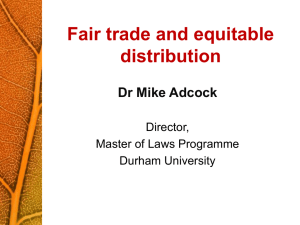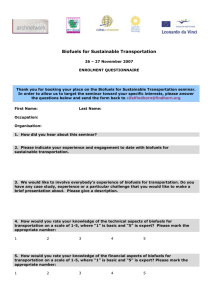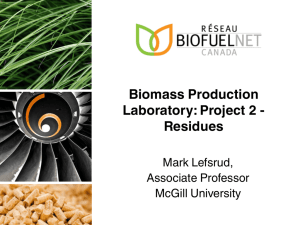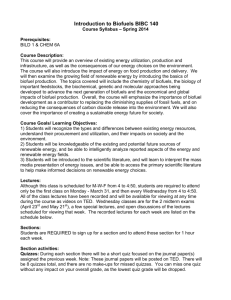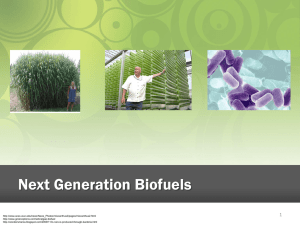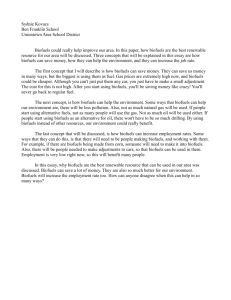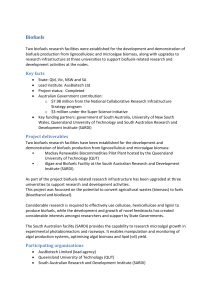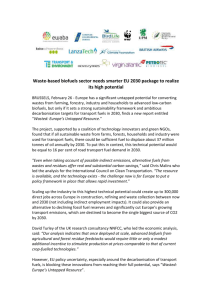BP*s response to the consultation of FAO / HLPE*s V0 draft of the
advertisement
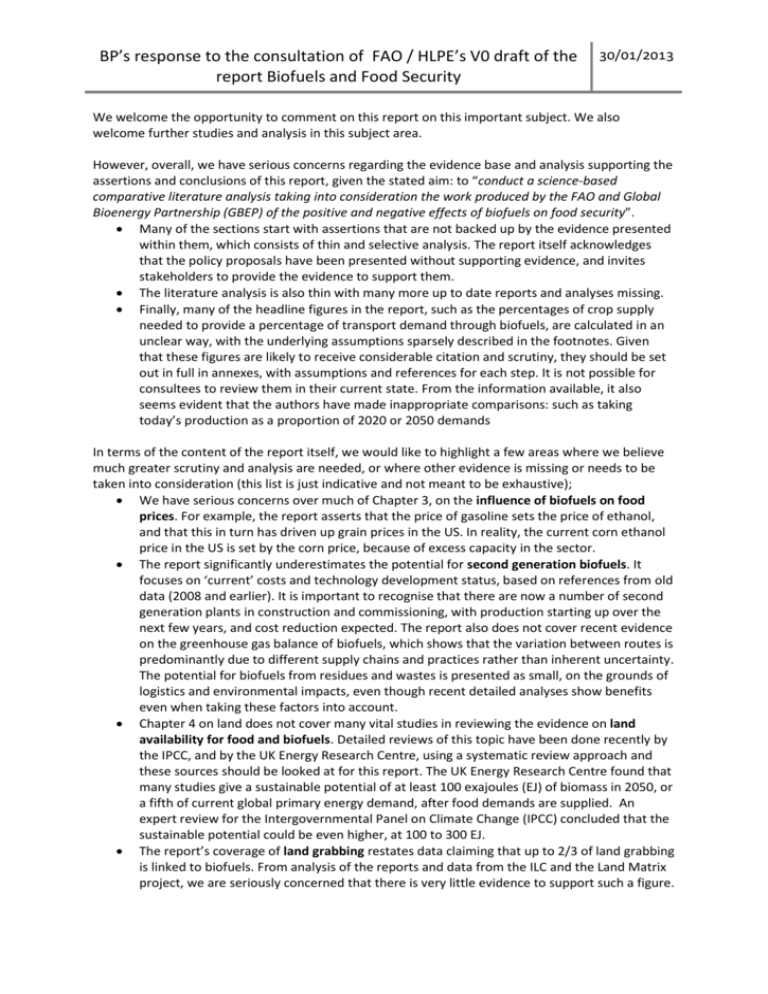
BP’s response to the consultation of FAO / HLPE’s V0 draft of the report Biofuels and Food Security 30/01/2013 We welcome the opportunity to comment on this report on this important subject. We also welcome further studies and analysis in this subject area. However, overall, we have serious concerns regarding the evidence base and analysis supporting the assertions and conclusions of this report, given the stated aim: to “conduct a science-based comparative literature analysis taking into consideration the work produced by the FAO and Global Bioenergy Partnership (GBEP) of the positive and negative effects of biofuels on food security”. Many of the sections start with assertions that are not backed up by the evidence presented within them, which consists of thin and selective analysis. The report itself acknowledges that the policy proposals have been presented without supporting evidence, and invites stakeholders to provide the evidence to support them. The literature analysis is also thin with many more up to date reports and analyses missing. Finally, many of the headline figures in the report, such as the percentages of crop supply needed to provide a percentage of transport demand through biofuels, are calculated in an unclear way, with the underlying assumptions sparsely described in the footnotes. Given that these figures are likely to receive considerable citation and scrutiny, they should be set out in full in annexes, with assumptions and references for each step. It is not possible for consultees to review them in their current state. From the information available, it also seems evident that the authors have made inappropriate comparisons: such as taking today’s production as a proportion of 2020 or 2050 demands In terms of the content of the report itself, we would like to highlight a few areas where we believe much greater scrutiny and analysis are needed, or where other evidence is missing or needs to be taken into consideration (this list is just indicative and not meant to be exhaustive); We have serious concerns over much of Chapter 3, on the influence of biofuels on food prices. For example, the report asserts that the price of gasoline sets the price of ethanol, and that this in turn has driven up grain prices in the US. In reality, the current corn ethanol price in the US is set by the corn price, because of excess capacity in the sector. The report significantly underestimates the potential for second generation biofuels. It focuses on ‘current’ costs and technology development status, based on references from old data (2008 and earlier). It is important to recognise that there are now a number of second generation plants in construction and commissioning, with production starting up over the next few years, and cost reduction expected. The report also does not cover recent evidence on the greenhouse gas balance of biofuels, which shows that the variation between routes is predominantly due to different supply chains and practices rather than inherent uncertainty. The potential for biofuels from residues and wastes is presented as small, on the grounds of logistics and environmental impacts, even though recent detailed analyses show benefits even when taking these factors into account. Chapter 4 on land does not cover many vital studies in reviewing the evidence on land availability for food and biofuels. Detailed reviews of this topic have been done recently by the IPCC, and by the UK Energy Research Centre, using a systematic review approach and these sources should be looked at for this report. The UK Energy Research Centre found that many studies give a sustainable potential of at least 100 exajoules (EJ) of biomass in 2050, or a fifth of current global primary energy demand, after food demands are supplied. An expert review for the Intergovernmental Panel on Climate Change (IPCC) concluded that the sustainable potential could be even higher, at 100 to 300 EJ. The report’s coverage of land grabbing restates data claiming that up to 2/3 of land grabbing is linked to biofuels. From analysis of the reports and data from the ILC and the Land Matrix project, we are seriously concerned that there is very little evidence to support such a figure. BP’s response to the consultation of FAO / HLPE’s V0 draft of the report Biofuels and Food Security 30/01/2013 The planned crops for many of these deals could be used to produce biofuels, but there is little evidence given that they are actually intended for biofuels. We would be happy to meet with the HLPE Steering Group and Project Team to talk through our concerns on the report, and to provide further details of evidence to help inform the next version.
